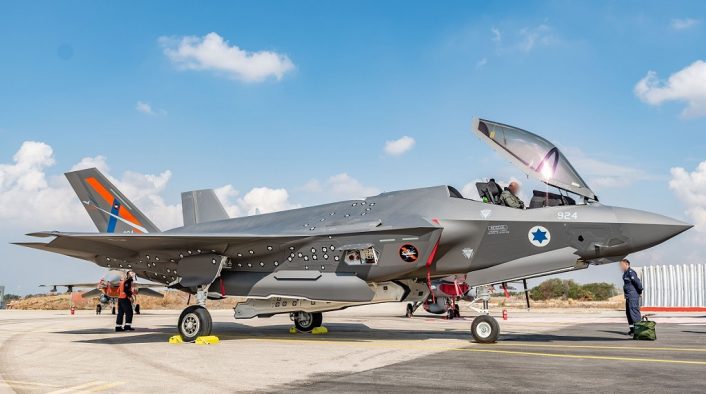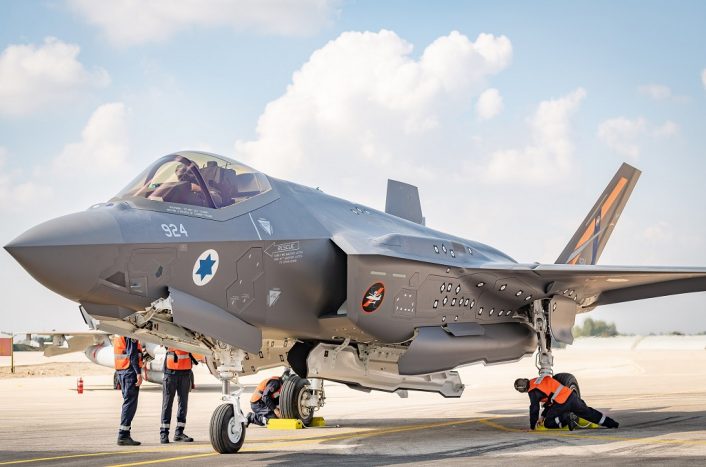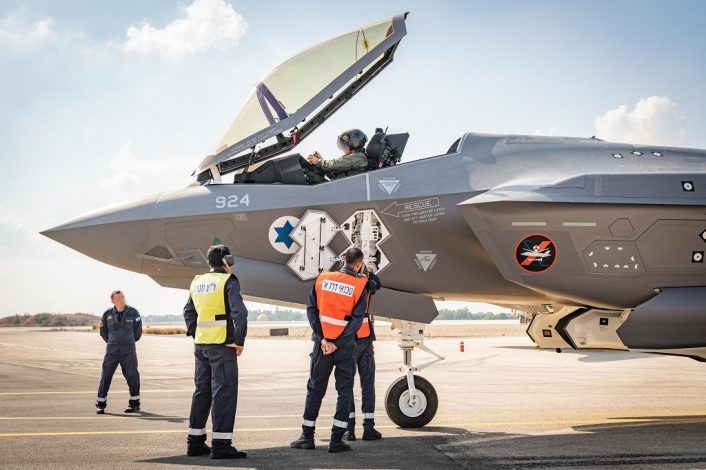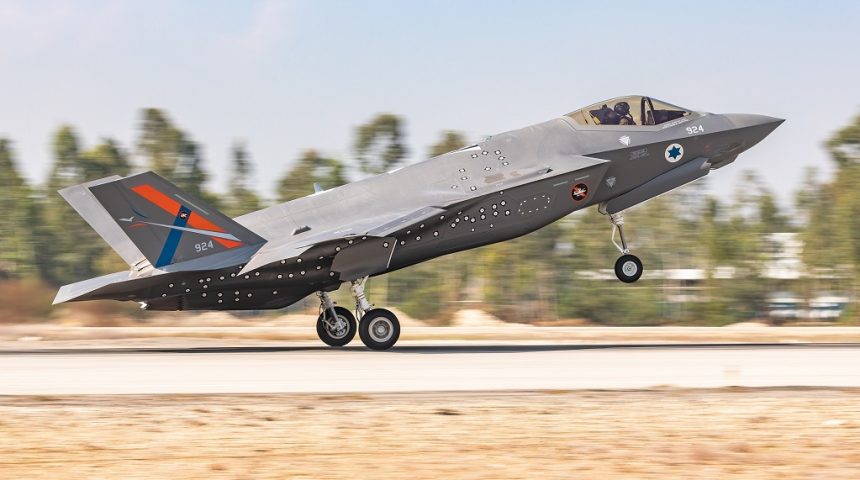The colorful F-35I Adir Test aircraft has been configured uniquely for operational testing of Israeli weapons and systems
The Israeli Air Force Flight Testing Center (FTC) at Tel-Nof AFB received on Nov. 11, 2020, the first F-35I Adir test aircraft outside the United States. The one-of-a-kind aircraft, with serial 924 and construction number AS-15, has been configured uniquely for the IAF and is different from other test aircraft in the USA, as it presents both advanced aeromechanical testing capabilities and full operational capabilities. Interestingly, the Adir was painted with high-visibility colored national insignias and the orange, blue and gray markings of the FTC.
Welcome Home.
Today marks the start of a new era in our Flight Testing Center as the very first experimental “Adir” (F-35I) aircraft in the IAF arrived at Tel Nof AFB. Here are all of the details about the cutting-edge fighter jet 👉https://t.co/xHlPdRXEQl pic.twitter.com/dN4f7EeeHv
— Israeli Air Force (@IAFsite) November 11, 2020
Another interesting detail is the EOTS (Electro-Optical Targeting System) which appears to be painted in the same color of the rest of the airframe. It is not known if this is some particular paint that lets the sensor see through it or if the sensor is entirely missing and replaced by a fairing which replicates its shape. In the latter case, we could hypothesize that the IAF will receive a custom variant of the EOTS developed by Rafael, the same developer of the Litening Advanced Targeting Pod and the RecceLite reconnaissance pod.

“With the new addition of the ‘Adir’ to the lines of experimental aircraft in the Israeli Air Force’s FTC Squadron, we are witnessing a historic event, the magnitude of which cannot be underestimated – a meaningful corner stone in the IAF’s inauguration and development of the F-35 division”, said Brig. Gen. Oded Cohen, Commander of Tel-Nof AFB. “To the FTC Squadron personnel – the absorption of the ‘Adir’ poses new challenges. I have no doubt that by virtue of your skill and professional spirit you will know, as you have proven in the past, how to challenge the limits of the ‘Adir’s’ capabilities, and lead the IAF through toward new horizons”.

The new aircraft, actually, already arrived in Israel in August, accompanied by three other “standard” F-35I. During the following months, the aircraft reportedly underwent the installation of an improved Electronic Warfare suite and other Israeli classified systems. It is during this time that the aircraft received the high-visibility markings, as when it was photographed during pre-delivery testing in the US and during the delivery flight while stopping at Lajes Air Base the aircraft had only the black and white fiduciary markers used for calibration and to identify parameters from known points on the airframe while analyzing photos and videos.
The IAF has always integrated its own weapons and systems (especially EW systems) on its foreign-built aircraft to satisfy the country’s operational needs. However, with the F-35I the IAF does not have access to everything, as happens for the other countries, requiring some changes in how the testing will be performed. The F-35 will reportedly receive the Rafael Spice EO/GPS guided bomb and the Israel Military Industries Delilah man-in-the-loop-controlled cruise missile, but the FTC insignia shows also the silhouette of the Rafael Python 5 IR-guided air-to-air missile, hinting at a possible integration to replace the AIM-9X’s on the F-35’s external rails. Here is how Lt. Col. Y, Commander of the FTC Squadron, described the activities that they will perform at Tel-Nof:
“In the ‘Adir’ program, the IAF doesn’t have access to everything, and cannot fully intervene. The ‘Adir’ division is set to play a central role in the IAF’s future operational activity. Therefore, we understand the need to test it and adapt its weapons systems to the operational reality in the field. The experimental F-35I will act as the main building block for acquiring new flight capabilities and allow for independent installation of munitions.
New weapons affect the aircraft in different ways. We run an entire series of tests to certify a capability, such as load testing, fluttering, and release fluency. In load testing, we examine the durability of the weapon and aircraft while performing complex maneuvers. In flutter testing, we check for aerodynamic phenomenon that may endanger the jet. While testing release fluency, we scan for issues in the release process of munitions – a significant test for the ‘Adir’ since its payload is released from an internal hold in the jet’s body. After the testing process is completed, we are able to determine the guidelines for operating with the new capability”.
To perform such activities, the Adir 924 has been equipped with unspecified sensors and recorders to gather test data that can be subsequently analyzed on the ground. Also, this aircraft comes with a white triangular telemetry antenna on top of the fuselage, similarly to the F-35’s early prototypes (like AF-01, BF-01 and CF-01 and some others), to transmit data for live monitoring. Specific systems can be installed according to the type of test to be performed. Moreover, the aircraft can easily be converted back to a full operational configuration, should the need arise.
The FTC’s Systems Department collects and dissects the data recorded from the aircraft systems during the tests, including delivering the information in real-time to the squadron on the ground, where each test is closely monitored. The personnel will receive training and assistance from Lockheed Martin to fully understand the systems and plan the testing process, as explained by Maj. Manny, Commander of the Systems Department:
“The purpose of the systems is to provide data that the aircraft cannot display on its own, thus allowing for an effective de-brief and learning experience. While planning for the acquisition of the experimental F-35I, the IAF began to establish the kind of testing that would be held. Accordingly, appropriate systems were assimilated during production”.
The ‘Adir’ speaks a different language, one that we must connect with and learn to understand. The IAF knows how to operate the “Adir”, but does not yet know how to operate an experimental model. We need to receive the relevant knowledge in order to operate the aircraft and fly it prior to the testing process”.

The Adir 924 is one of just two F-35s (that we know of) with colored national insignias, the other being a US Navy F-35C. Some other Lightnings sport colored tails instead, as some CAG aircraft of the US Navy and US Marine Corps and two Italian F-35s. The Royal Danish Air Force, however, will have all its F-35s painted with colored national roundels on the fuselage and wings and the Dannebrog, the Flag of Denmark, on the tail.








